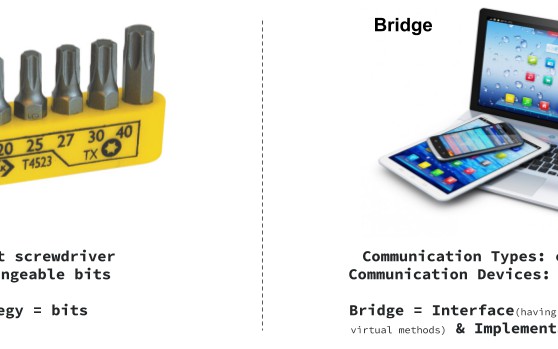Bridge Design Pattern is a Structural Design Pattern used to decouple a class into two parts — abstraction and it’s implementation — so that both can be developed independently. This promotes the loose coupling between class abstraction and its implementation. You get this decoupling by adding one more level of indirection i.e. an interface that acts as a bridge between your original class and functionality. Insulation is another name of the Bridge Design Pattern in the C++ world.
“All problems in computer science can be solved by another level of indirection.” — David Wheeler
The code snippets you see throughout this series of articles are simplified not sophisticated. So you often see me not using keywords like override, final, public(while inheritance) just to make code compact and consumable(most of the time) in a single standard screen size.
I also prefer struct instead of class just to save line by not writing “public:” sometimes and also miss virtual destructor, constructor, copy constructor, prefix std::, deleting dynamic memory, intentionally. I also consider myself a pragmatic person who wants to convey an idea in the simplest way possible rather than the standard way or using Jargon.
#java #tutorial #c++ #cpp #design pattens
